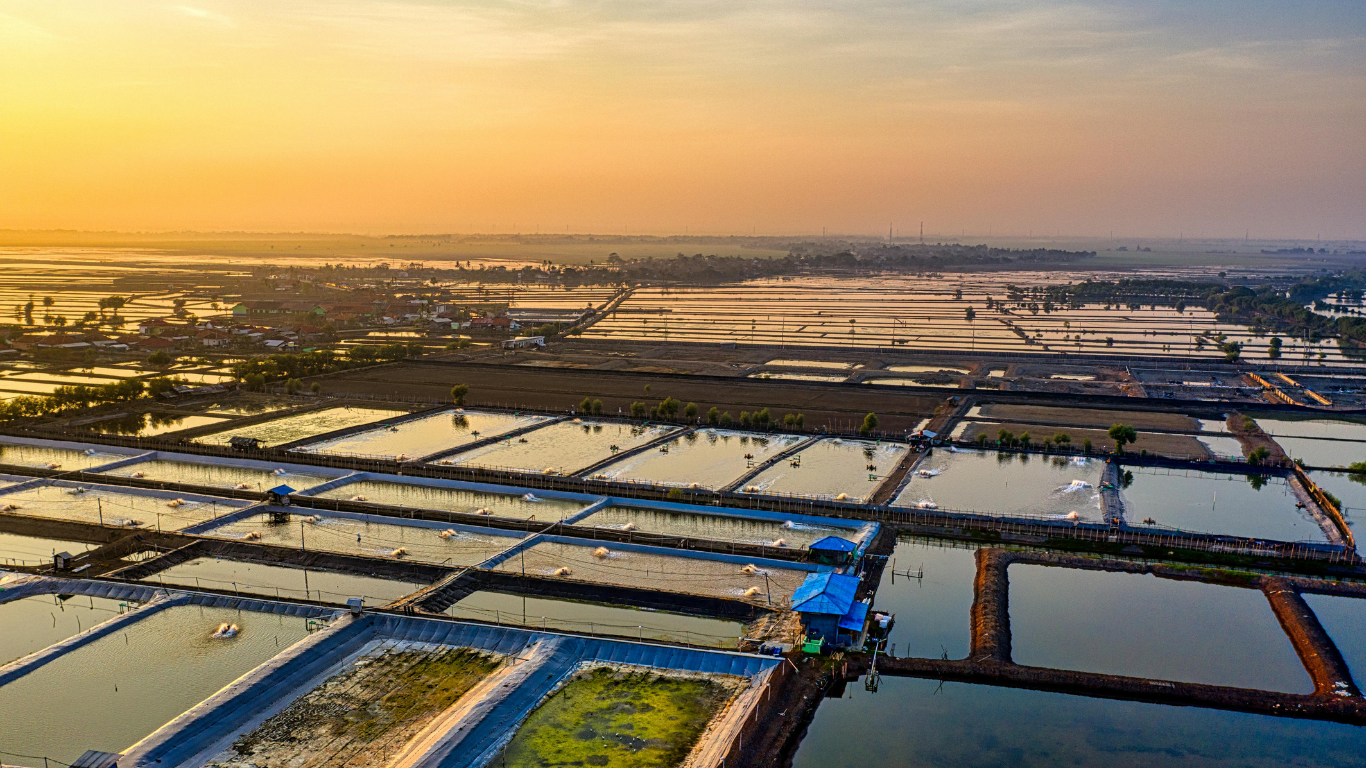Imagine a shimmering pond under the tropical sun, teeming with giant freshwater prawns, each one a testament to nature’s bounty and human ingenuity. Prawn farming, or aquaculture of these succulent crustaceans, is more than just a business—it’s a thrilling journey into sustainable food production, economic opportunity, and environmental stewardship. Whether you’re a curious beginner, an aspiring farmer in India or the USA, or a global traveler eager to explore innovative agriculture, this 3000-word guide will plunge you into the exhilarating world of prawn farming. From pond design to disease management, we’ll cover every facet with a sensational yet educational tone, ensuring you’re equipped to ride the wave of this booming industry.
What Is Prawn Farming?
Prawn farming is the cultivation of prawns—freshwater or marine crustaceans like the giant river prawn (Macrobrachium rosenbergii) or black tiger shrimp (Penaeus monodon)—in controlled environments such as ponds, tanks, or cages. Unlike wild fishing, prawn farming allows farmers to manage breeding, growth, and harvest, ensuring consistent supply and quality. This practice spans tropical and subtropical regions, with powerhouses like India, Bangladesh, Vietnam, and parts of the USA leading the charge.
Prawn farming blends science and strategy, transforming simple ponds into thriving ecosystems. It’s a dance of biology, water chemistry, and economics, offering high rewards for those who master its rhythm. With global demand for prawns soaring—India alone produced 620,000 metric tons of shrimp in 2020 despite challenges—this industry is a tidal wave of opportunity.
Why Is Prawn Farming Sensational?
Picture harvesting 3 tons of plump, juicy prawns from a single pond, each kilogram fetching up to $5 in markets from Delhi to New York. Prawn farming isn’t just agriculture; it’s a high-stakes adventure where farmers battle cyclones, outsmart diseases, and unlock profits that can reach millions. It’s sustainable, scalable, and feeds a world hungry for seafood. Ready to dive in? Let’s explore the essentials.
Why Prawn Farming Matters
Prawns are a global delicacy, prized for their sweet, lobster-like flavor and versatility in dishes from Indian curries to American shrimp cocktails. But prawn farming’s impact goes beyond the plate. Here’s why it’s a game-changer:
1. Economic Powerhouse
Prawn farming generates massive revenue and jobs. In Bangladesh, it employs over 1.3 million people, while India’s shrimp exports earned $4.8 billion in 2019. Small-scale farmers like Mr. Ramaswamy in India earn up to 60 lakh rupees ($80,000) annually from 25 acres.
2. Food Security
With wild fisheries depleting, prawn farming meets rising seafood demand. It provides a reliable protein source, supporting diets worldwide. In the USA, Midwest farms supply fresh prawns to local markets, reducing import reliance.
3. Sustainable Potential
Extensive prawn farming, with low stocking densities, minimizes environmental impact. Innovations like Australia’s low-input systems reduce feed costs and waste, paving the way for eco-friendly aquaculture.
4. Community Empowerment
Prawn farming uplifts rural and indigenous communities. In Australia’s Tiwi Islands, projects with Tiwi Resources create jobs and economic stability for future generations.
5. Climate Resilience
Prawn farms can adapt to challenging climates, from India’s monsoons to Australia’s cyclone-prone north. Strategic pond design and technology make them resilient food production hubs.
Example: Ramaswamy’s Success Story
Mr. Ramaswamy, an Indian farmer, turned 25 acres into a prawn empire, earning 60 lakh rupees yearly. By dividing his land into 12 ponds and using high-quality seed, he minimized losses and maximized profits, proving prawn farming’s transformative potential.
Types of Prawn Farming
Prawn farming varies by species, environment, and intensity. Here’s a breakdown:
1. Freshwater Prawn Farming
Focuses on species like Macrobrachium rosenbergii. Common in Bangladesh and the USA’s Midwest, it uses ponds or reservoirs with low salinity. Extensive systems stock 4-6 prawns per square meter, requiring minimal feed.
2. Marine Shrimp Farming
Targets species like Penaeus monodon or whiteleg shrimp (Litopenaeus vannamei). Prevalent in India and Vietnam, it requires saline water and often intensive systems with 25-50 prawns per square meter.
3. Extensive vs. Intensive Systems
- Extensive: Low stocking (4-6 prawns/m²), minimal feed, and lower costs. Ideal for beginners and sustainable farming, as seen in Australia’s Northern Territory trials.
- Semi-Intensive: Moderate stocking (10-20 prawns/m²), supplemental feed, and higher yields. Common in Bangladesh.
- Intensive: High stocking (40-65 prawns/m²), artificial substrates, and high feed inputs. Used in experimental US farms, yielding up to 2,000 pounds per acre.
Example: Vietnam’s Extensive Model
Vietnam’s extensive prawn farms, stocking less than 5 prawns per square meter, thrive with minimal feed, leveraging natural pond ecosystems. This low-input approach inspires Australia’s CSIRO projects.
Setting Up a Prawn Farm: The Blueprint
Starting a prawn farm is like launching a blockbuster—it requires planning, investment, and a stellar cast of resources. Here’s how to build your aquaculture empire:
1. Site Selection
Choose a site with access to clean water and suitable soil. Avoid acidic soils (pH <5) or heavy metal contamination. Clayey loamy soils with pH 7-8 and organic carbon (1.5-2.5%) are ideal for pond stability and plankton growth.
Example: Tiwi Islands Pilot
Australia’s CSIRO selected Wurankuwu, Bathurst Island, for its prawn farm pilot due to its saline water access and community support, ensuring ecological and social fit.
2. Pond Construction
Design ponds of 1-1.5 acres for manageability, with depths of 1-1.5 meters. Include a reservoir (15% of total area) for water storage and treatment. Construction costs range from $5,000 per acre in the USA to lower costs in India.
3. Water Quality Management
Maintain water pH (7.5-8.5), salinity (8-25 ppt for marine prawns), and oxygen (>4 ppm). Add gypsum (600 kg/ha) if hardness is below 50 mg/L. Monsoon rains can dilute salinity, so monitor and adjust.
4. Seed Selection
Source high-quality postlarvae (PL) from reputable hatcheries. In India, farmers like Ramaswamy choose disease-free PL to boost survival rates. Stocking density depends on the system: 4/m² for extensive, up to 65/m² for intensive with substrates.
5. Feed and Nutrition
Prawns need 40 essential nutrients. Extensive systems rely on natural plankton, while intensive farms use formulated feeds with a food conversion ratio (FCR) of 1.5-1.8. Ramaswamy mixes ginger and turmeric into feed to prevent disease, reducing FCR to 1.5.
6. Infrastructure and Technology
Invest in aeration systems, pond netting (to deter birds), and monitoring tools like pH meters. Australia’s CSIRO explores lasers and drones to replace costly netting, cutting operational costs.
Example: Kentucky’s Intensive Farm
A Kentucky farm used vertical substrates to boost yields to 1,800 kg/ha, with prawns averaging 35g. Permanent substrates reduced labor, making intensive farming viable for small-scale producers.
Prawn Farming Process: From Seed to Harvest
Prawn farming is a cycle of nurturing and strategy. Here’s the step-by-step journey:
1. Hatchery and Nursery Phase
Prawn larvae (nauplii) hatch in saline water and feed on phytoplankton after 2-3 days. Nurseries rear PL to 0.5-1g before transfer to grow-out ponds. India’s 38 feed mills support this phase with specialized larval feeds.
2. Grow-Out Phase
Juveniles are stocked in ponds and grown for 5-6 months. Extensive systems rely on natural food, while intensive farms feed 1.5-3 kg of feed per kg of prawn. Regular water quality checks ensure optimal growth.
3. Disease Management
Diseases like White Spot Syndrome Virus (WSSV) and bacterial septicemia threaten farms. Symptoms include lethargy or black blisters. Treatments include antibiotic feeds (1.5g oxytetracycline/kg) and natural additives like garlic.
4. Harvesting
Prawns are harvested when they reach 30-40g, typically in early fall in the USA or summer/rainy seasons in India. Draining ponds directs prawns to catch basins for easy collection. Yields range from 1,000 kg/ha (extensive) to 2,500 kg/ha (intensive).
Example: Bangladesh’s Polyculture
In Noakhali, Bangladesh, farmers integrate prawn farming with rice and fish, using 149 ha to yield diverse crops. This mixed system boosts income and resilience, inspiring global models.
Challenges in Prawn Farming
Prawn farming is a high-reward venture, but it’s not without storms. Here are key challenges:
1. Disease Outbreaks
Viral diseases like WSSV and microsporidian parasites like Enterocytozoon hepatopenaei (EHP) cause slow growth and mortality. India’s farmers use nurseries to strengthen PL, reducing disease risk.
2. Environmental Factors
Cyclones, monsoons, and bird predation (reducing survival to 6% without netting) threaten farms. Australia’s CSIRO tests drones to deter birds, avoiding costly netting.
3. High Costs
Intensive farming requires significant investment—$5,000/acre for ponds and $3 lakh/pond for feed in India. Extensive systems lower costs but yield less.
4. Market Volatility
Prawn prices fluctuate, as seen in India’s 2020 lockdown when prices crashed. Strong supply chains, like Noakhali’s to processing plants, stabilize income.
5. Sustainability Concerns
Intensive farming can strain water resources and produce waste. Low-input systems and polyculture, as in Bangladesh, offer greener alternatives.
Example: India’s WSSV Battle
When WSSV hit Indian farms, farmers adopted nursery systems and biosecurity measures, reducing losses and inspiring global disease management strategies.
How to Succeed in Prawn Farming
Success demands knowledge, vigilance, and innovation. Here’s how to thrive:
1. Invest in Quality
Choose disease-free PL and high-quality feed. Ramaswamy’s focus on seed quality yields 3 tons per pond.
2. Monitor Water Quality
Regularly test pH, salinity, and oxygen. Use gypsum or lime to correct imbalances, as recommended by FAO guidelines.
3. Embrace Technology
Adopt aeration, drones, or AI for monitoring, as seen in Australia’s CSIRO trials, to cut costs and boost efficiency.
4. Diversify Income
Integrate prawns with rice or fish, like Bangladesh’s polyculture, to hedge risks and increase profits.
5. Build Networks
Join farmer associations or partner with NGOs, as in Noakhali, to access training and markets.
Example: Purdue’s Midwest Model
Purdue University’s Extension supports Midwest farmers with fact sheets and recipes, helping them sell fresh prawns at farmers’ markets for $5.50/pound.
Tips for Visiting a Prawn Farm: For India, USA, and Travelers
Curious to see prawn farming in action? Whether you’re in India, the USA, or traveling, these tips ensure a memorable visit:
- Research Farms: In India, visit farms in Andhra Pradesh or Noakhali; in the USA, check Midwest farms via Purdue Extension. Travelers, contact CSIRO for Australian tours. Verify visiting hours and biosecurity rules.
- Dress for the Field: Wear sturdy boots and light clothing for India’s humid farms or layers for Midwest fall visits. Travelers, pack rain gear for tropical regions. Bring hats and sunscreen.
- Bring Tools: A notebook and camera capture pond designs and farmer tips. Binoculars spot birds at Australian farms. Travelers, carry a universal adapter for devices.
- Respect Biosecurity: Avoid touching prawns or water to prevent disease spread. Follow guides’ instructions, especially in India’s disease-prone farms.
- Engage and Learn: Ask about feed strategies or disease control. In India, learn about turmeric feeds; in the USA, explore substrate use. Travelers, compare global techniques.
Example: A Traveler’s Australian Adventure
A UK tourist visited CSIRO’s Darwin farm, learning about drone-based bird deterrence and tasting fresh tiger prawns. Their Instagram post with #PrawnFarming sparked local interest.
The Future of Prawn Farming
Prawn farming is poised for a revolution. Emerging trends include:
- Smart Aquaculture: AI and IoT monitor water quality, as tested in Australia, optimizing resources.
- Sustainable Systems: Low-input and polyculture models, like Bangladesh’s, reduce environmental impact.
- Genomic Advances: Brazil’s genome editing for tilapia inspires similar prawn research for faster growth.
- Global Expansion: The UN’s goal to boost aquaculture by 2030 will scale prawn farming in new regions like Northern Australia.
Example: CSIRO’s Vision
CSIRO’s pilot in Wurankuwu aims to expand prawn farming across Australia’s north, creating a $1 billion industry by 2030, blending sustainability and indigenous empowerment.
Conclusion: Ride the Prawn Farming Wave
Prawn farming is a thrilling fusion of science, sustainability, and profit, transforming ponds into goldmines and farmers into eco-heroes. From India’s shrimp giants to the USA’s Midwest pioneers, this 3000-word guide has unveiled its secrets—site selection, disease control, and innovative systems that yield millions. Challenges like diseases and costs are real, but with knowledge and technology, success is within reach.
Take the plunge today: visit a farm, start small, or share this guide with #PrawnFarming. Every action supports a sustainable, food-secure future. Let’s make waves together, ensuring prawn farming thrives for generations to come.




